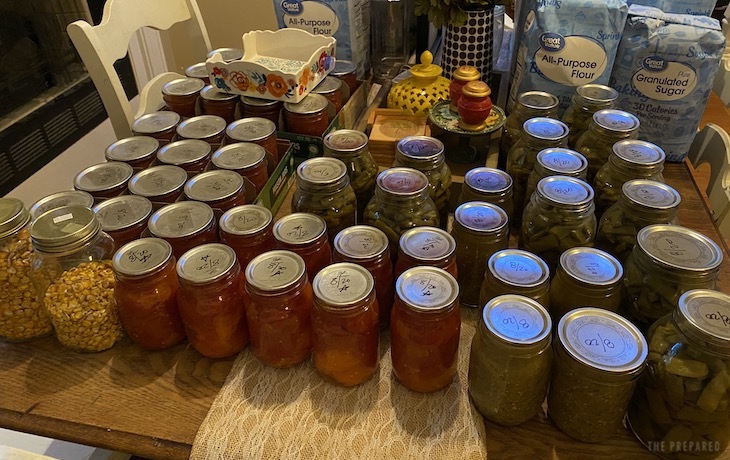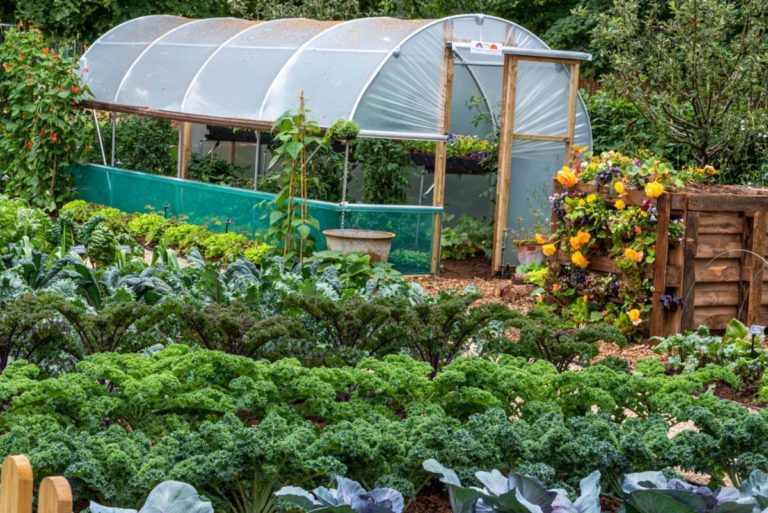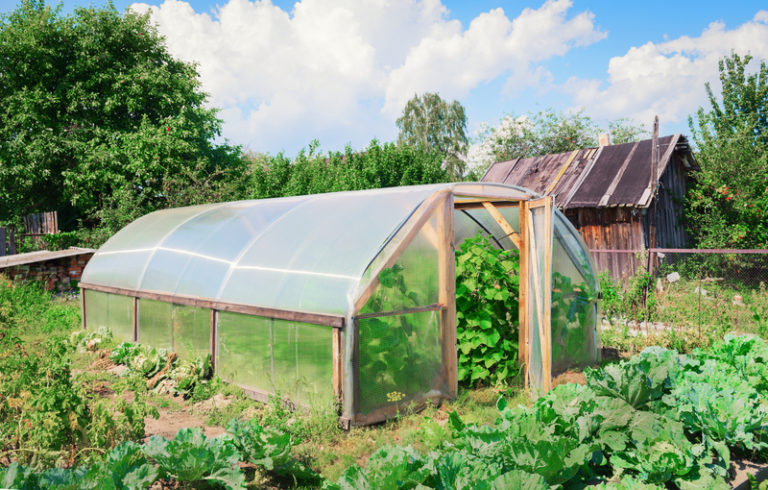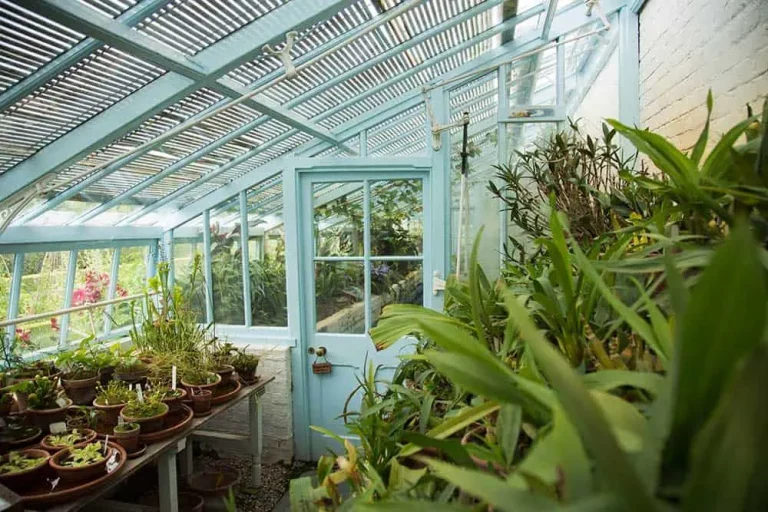Living off the grid means being self-sufficient and relying on natural resources to sustain yourself and your family.
One essential aspect of this lifestyle is preserving food, as it allows you to enjoy fresh produce year-round despite seasonal limitations.
The Art of Preserving Off-Grid Foods is a comprehensive guide that teaches you the skills and techniques needed to preserve your harvest and enjoy delicious meals even in the leanest months.
From fermentation to dehydrating, canning to freezing, this book covers all aspects of food preservation, empowering you to take control of your food security and live a more sustainable life off-grid.
Understand the importance of food preservation
Off-grid living often involves growing or hunting your own food, and proper preservation techniques can help you enjoy these foods throughout the year, even when fresh produce is not available.
Proper preservation techniques, such as canning, freezing, and dehydrating, can help you extend the life of your homegrown or hunted food, ensuring that you have a reliable source of nutritious meals throughout the year.
For example, by canning your own fruits and vegetables, you can enjoy a delicious and healthy jam or pickle even in the dead of winter.
Similarly, freezing allows you to save your fresh produce at the peak of its freshness, ensuring that you can enjoy it even when the weather turns cold.
Dehydrating can help you preserve fruits and vegetables by removing their moisture content, which can help prevent spoilage and extend their shelf life.
By mastering these preservation techniques, you can enjoy a wide variety of off-grid foods throughout the year, including fresh fruits and vegetables, homegrown meats, and wild foraged delicacies.
Off-grid living is all about self-sufficiency and relying on natural resources, and proper food preservation is a key component of that lifestyle.
Choose the right preservation method
Different methods are better suited for different types of foods. For example, canning is great for vegetables and fruits, while freezing is better for meats and dairy products.
When it comes to preserving food, it’s important to choose the right method for the specific type of food you’re working with.
Different preservation methods are better suited for different types of foods, and selecting the appropriate method can make all the difference in the quality and safety of your preserved foods.
For example, canning is an excellent method for preserving vegetables and fruits, as it uses heat to kill off any harmful bacteria or mold that may be present.
This makes canned vegetables and fruits a great option for off-grid food storage, as they can be safely stored for long periods of time without the need for refrigeration.
Canning allows for a wide variety of foods to be preserved, from classic vegetables like green beans and peas, to fruits like jam and pickles.
On the other hand, freezing is a better option for preserving meats and dairy products.
Freezing works by slowing down the growth of bacteria and other microorganisms, allowing you to safely store these types of foods for longer periods of time.
This makes frozen meats and dairy products a great choice for off-grid food storage, as they can be safely stored in a freezer for months at a time.
Freezing can be used to preserve a wide variety of foods, from meats like beef and pork, to dairy products like milk and cheese.
Overall, selecting the right preservation method for the specific type of food you’re working with is key to ensuring the safety and quality of your off-grid food storage.
While canning is ideal for vegetables and fruits, freezing is the better option for meats and dairy products.
Freezing works by slowing down the growth of bacteria and other microorganisms, allowing you to safely store these types of foods for longer periods of time.
This makes frozen meats and dairy products a great choice for off-grid food storage, as they can be safely stored in a freezer for months at a time.
Freezing can be used to preserve a wide variety of foods, from meats like beef and pork, to dairy products like milk and cheese.
By selecting the right preservation method for the specific type of food you’re working with, you can ensure the safety and quality of your off-grid food storage.
And remember, don’t forget about off-grid foods like jerky and canned goods, which can provide a vital source of sustenance in times of need.
Use the right equipment
To ensure safe and effective preservation, it’s important to use the right equipment for each method. For example, canning requires a pressure canner, while freezing requires a freezer that can maintain a consistent temperature.
Off the grid food preservation is a vital aspect of self-sufficiency and sustainable living.
In order to ensure safe and effective preservation, it’s important to use the right equipment for each method.
For example, canning requires a pressure canner, which is specifically designed to kill off harmful bacteria and maintain the proper temperature and pressure to preserve food for a long period of time.
The pressure canner works by heating the food to a high temperature, usually around 212°F, and then sealing it in an airtight container, which creates a vacuum that helps to kill off any bacteria or mold that may be present.
This method is perfect for preserving vegetables, fruits, meats, and fish, and it allows you to enjoy your harvest all year round, even when the fresh produce is not in season.
Another popular method of off the grid food preservation is freezing.
Freezing requires a freezer that can maintain a consistent temperature, usually around 0°F, which is essential for preserving food for an extended period of time.
Freezing works by slowing down the metabolic processes of the food, which helps to preserve its nutritional value and texture.
This method is ideal for preserving fruits, vegetables, meats, and even leftovers, and it’s a great way to save money and reduce food waste.
Off the grid food preservation also includes dehydrating, smoking, and pickling, which require different equipment and techniques.
Dehydrating involves removing the moisture from the food, which makes it last longer and easier to store.
Smoking involves exposing the food to smoke, which adds flavor and preserves the food.
Pickling involves soaking the food in a brine solution, which helps to preserve it and give it a tangy flavor.
In addition to these methods, off the grid food preservation also involves using the right packaging materials to protect the food from contamination and spoilage.
This includes using airtight containers and packaging materials that are resistant to moisture and pests.
Overall, off the grid food preservation is a great way to save money, reduce food waste, and ensure a steady supply of healthy and delicious food, even in the face of grid failures or other disruptions.
With the right equipment and techniques, anyone can become a master of off the grid food preservation and enjoy a more self-sufficient and sustainable lifestyle.
Follow safe preservation practices
It’s important to follow safe preservation practices to prevent contamination and spoilage. This includes proper sterilization and acidification of foods, as well as storing foods at the correct temperature.
When it comes to preserving food, safety is of the utmost importance.
Contamination and spoilage can quickly ruin even the most delicious of off-the-grid foods, so it’s essential to follow proper preservation practices to ensure your food remains safe to eat.
One of the most important steps in safe preservation is proper sterilization.
This involves using heat or chemicals to kill off any harmful bacteria or viruses that may be present on the food.
For example, canning and pickling are both great methods for preserving food while also sterilizing it.
Another important aspect of safe preservation is acidification.
Acidic foods like tomatoes, citrus fruits, and vinegar-based pickles are less likely to become breeding grounds for harmful bacteria, so they can be preserved without refrigeration.
Storing foods at the correct temperature is important.
The ideal temperature range for storing most off-the-grid foods is between 32°F and 40°F (0°C and 4°C), as this will help to slow down the growth of bacteria and other microorganisms that can cause spoilage.
Preserve food at the right time
Timing is important when it comes to preserving food. For example, canning vegetables and fruits is best done during their peak ripeness, while meats and dairy products are best preserved when they are at their peak freshness.
Timing is everything when it comes to preserving food.
Different types of food have specific windows of opportunity for preservation, and missing these windows can result in inferior or unsafe preserved food.
For example, vegetables and fruits are best preserved when they are at their peak ripeness, which is typically during the summer and fall months when they are most plentiful and flavorful.
Canning these foods during this time ensures that they will retain their color, texture, and flavor, and that they will be safe to eat for months to come.
On the other hand, meats and dairy products are best preserved when they are at their peak freshness, which is usually during the cooler months of the year.
Preserving these foods during this time helps to maintain their quality and prevent spoilage.
In addition to timing, it’s important to consider the type of preservation method being used.
For example, canning is best for acidic foods like fruits and pickled vegetables, while freezing is better for meat and dairy products.
Dehydrating is another great option for preserving fruits and vegetables, as it allows them to be stored for long periods of time without the need for refrigeration.
Off the grid food preservation methods like fermentation and smoking can also be used to preserve food without the need for electricity or specialized equipment.
By understanding the best times to preserve different types of food, and the most appropriate preservation methods to use, you can ensure that your preserved food is not only delicious, but also safe to eat.
Keep track of your inventory
Proper inventory management is key to ensuring that your preserved foods remain fresh and safe to eat. This includes keeping track of the date of preservation and the storage conditions.
Effective inventory management is important for ensuring the freshness and safety of your preserved foods.
This involves keeping track of the date of preservation, as well as the storage conditions, such as temperature, humidity, and light exposure.
By doing so, you can monitor the quality of your preserved foods and determine when they may be past their prime or no longer safe to eat.
For example, if you preserve fruits using canning methods, you should note the date of canning, the type of fruit, and the sterilization methods used.
This information will help you keep track of the storage conditions and ensure that your fruits remain fresh and free from contamination.
Proper inventory management will help you identify any spoilage or contamination issues early on, allowing you to take action before they escalate into larger problems.
By keeping accurate records of your inventory, you can enjoy delicious and safe off-grid food for a longer period.
Off-grid food preservation techniques like canning, freeze-drying, and fermentation offer a range of preserved food options like fruits, vegetables, meats, and dairy products.
Keeping track of your inventory will ensure that these preserved foods remain fresh and safe to eat, even when stored for extended periods.
Be creative with your preservation techniques
There are many creative ways to preserve food, such as dehydrating, smoking, or pickling. Consider trying these methods to add variety to your off-grid diet.
When living off the grid, it’s essential to have a variety of preservation techniques up your sleeve to ensure a stable and nutritious food supply throughout the seasons.
While canning and freezing are tried-and-true methods, consider trying more creative techniques like dehydrating, smoking, or pickling to add variety to your off-grid diet.
Dehydrating fruits and vegetables can help preserve their nutritional value and texture, while smoking meats can add a delicious, savory flavor.
Pickling vegetables and fruits can also add a tangy, crunchy element to your meals.
With a little experimentation, you can develop your own unique preservation methods that work best for your off-grid lifestyle and preferences.
Off-grid food preservation doesn’t have to be limited to just fruits and vegetables.
Smoking fish and meats can also be a delicious and nutritious option.
Smokers can be fueled by renewable energy sources like solar or wind power, making them an excellent choice for off-grid living.
Consider trying out alternative preservation methods like fermentation or curing, which can add a new layer of flavor and nutrition to your off-grid diet.
Remember that creativity and experimentation are key when it comes to off-grid food preservation.
With a little practice and patience, you can develop your own unique preservation techniques that work best for your lifestyle and preferences.
So, get creative and start exploring the world of off-grid food preservation today!
Learn about the science behind food preservation
Understanding the science behind food preservation can help you make informed decisions about how to preserve your food and ensure that it remains safe and healthy to eat. This includes understanding the principles of thermodynamics and the chemistry of food preservation.
Understanding the science behind food preservation is important to ensuring the safety and quality of your food.
The principles of thermodynamics play a key role in determining the best preservation methods for your food.
For example, the first law of thermodynamics states that energy cannot be created or destroyed, only transferred.
This means that when you heat or cool food, you are simply transferring energy from one form to another.
This energy transfer can have a significant impact on the quality and safety of your food.
In addition to thermodynamics, the chemistry of food preservation is also important to understand.
Different preservation methods, such as canning, freezing, and dehydrating, affect the chemical composition of your food in different ways.
For example, canning involves heating food to a high temperature to kill off harmful bacteria, while freezing preserves food by slowing down the growth of microorganisms.
Understanding these chemical changes can help you make informed decisions about how to preserve your food and ensure that it remains safe and healthy to eat.
Furthermore, understanding the science behind food preservation can also help you get creative with your off-the-grid food preservation techniques.
For example, you can use the principles of thermodynamics to create your own solar dehydrator or a homemade canning system.
With a little bit of knowledge and some experimentation, you can develop your own unique preservation methods that are tailored to your specific needs and resources.
Understanding the science behind food preservation is essential to ensuring the safety and quality of your food.
By understanding the principles of thermodynamics and the chemistry of food preservation, you can make informed decisions about how to preserve your food and develop creative and effective preservation techniques that work for you.
Whether you’re preserving food for short-term or long-term storage, the knowledge you gain from studying the science of food preservation will help you to produce healthy and delicious food, even when the grid is down.]]
Learning the science behind food preservation is a important aspect of ensuring the safety and quality of your food.
By understanding the principles of thermodynamics and the chemistry of food preservation, you can make informed decisions about how to preserve your food and develop creative and effective preservation techniques that work for you.
Off the grid food preservation techniques such as canning, freezing, and dehydration allow you to preserve food for both short and long-term storage.
With a little bit of knowledge and experimentation, you can develop your own unique preservation methods that are tailored to your specific needs and circumstances.
Off the grid food preservation allows you to produce healthy and delicious food even when the grid is down.
With the knowledge gained from studying the science of food preservation, you can preserve food that is not only safe and healthy but also free of harmful additives and preservatives found in processed foods.
By taking the initiative to learn about food preservation, you can ensure that your family has access to nutritious and sustainable food sources even in the most challenging situations.].
Want More? Dive Deeper Here!
Hey there! If you’re the type who loves going down the rabbit hole of information (like we do), you’re in the right spot. We’ve pulled together some cool reads and resources that dive a bit deeper into the stuff we chat about on our site. Whether you’re just killing time or super into the topic, these picks might just be what you’re looking for. Happy reading!
- pivotid.uvu.edu – Preserving Everything Can Culture Pickle Freeze Ferment Dehydrate Salt Smoke And Store Fruits Vegetables Meat Milk And More Countryman Know How
- Tasting the “Future of Food” on a Bay-Area Cellular Agriculture Tour | Gastronomica | University of California Press
- “Stalking the Wild Asparagus” by Ewell Gibbons | National Museum of American History






